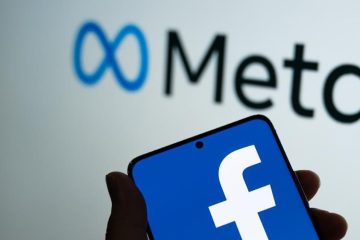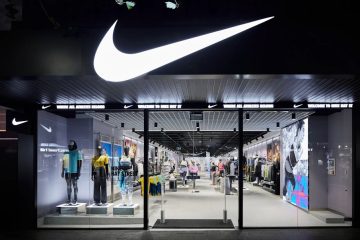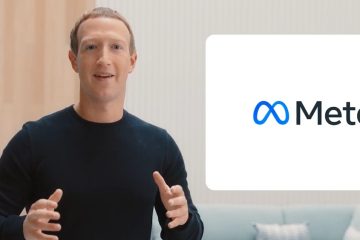Here Are the 5 Biggest M&A Deals of 2016

The presidential candidates grabbed headlines this year by appealing to voters’ distrust of big business. And behind the scenes, many of those businesses made plans to get bigger, with the help of some monumental deals.
While none of the largest M&A deals announced this year would be big enough to crack the all-time Top 10, there were plenty that involved major brands and potentially industry-shaking consequences. Overall, the value of the average merger or acquisition announced in 2016 was around $ 104.2 million, according to data from analytics firm Dealogic. That was smaller than in 2015, when the average deal was worth $ 115.4 million, but greater than the average for deals made between 2000 and 2014, which was around $ 77.1 million.
M&A activity flourished despite a harrowing election season for dealmakers. President-elect Donald Trump and Democratic presidential nominee Hillary Clinton both pointed disapproving fingers at various consolidations announced during the election cycle, arguing that the deals, especially one between AT&T and Time Warner, would give the combined entities too much power at the expense of consumers.
It’s too early to tell whether the Trump administration, which seems likely to be generally business-friendly, will try to block any of this year’s big mergers and acquisitions. Either way, you can scroll down to see the 5 biggest deals. (Values include any debt assumed.)
5. Qualcomm and NXP Semiconductors: $ 47 billion
The latter half of the year was when mergers and acquisition announcements began happening in earnest. In late October, San Diego-based Qualcomm (qcom) announced plans to buy Dutch manufacturer NXP Semiconductors for about $ 47 billion including debt—making it the biggest semiconductor deal on record, according to Dealogic. For Qualcomm, the purchase offers it a bigger foothold in areas where it had been weak, including chips for self-driving cars, mobile payment devices, and sensors for drones and other smart devices.
4. Sunoco Logistics and Energy Transfer Partners: $ 52 billion
In late November, Sunoco Logistics Partners and Energy Transfer Partners agreed to merge in a bid to lower borrowing and operating costs. Sunoco agreed to purchase Energy Transfer Partners in a $ 21 billion all-stock deal, while also assuming some $ 30 billion in long-term debt on Energy Transfer Partners’ balance sheets.
In one sense, this deal is like an in-house merger, since both companies are controlled by the gas and oil pipeline empire Energy Transfer Equity (ete). According to the two companies, the combined entity is expected to yield over $ 200 million in annual savings by 2019, while also attaining what the companies called, in a November statement, “increased diversification through the combination of Energy Transfer Partner’s primarily gas focused and Sunoco’s primarily liquids focused businesses.”
3. British American Tobacco and Reynolds American: $ 58 billion
Renewing the consolidation mania in the tobacco industry, British American Tobacco (bti) in October offered $ 47 billion in cash and stock for full control of Reynolds American. BAT already owns 42% of Reynolds; the announced deal would involve purchasing the remaining 58%. As of the third quarter, Reynolds also had some $ 12.6 billion in long-term debt.
The combination of the two companies would come at a time when tobacco companies have been struggling to gain market share, and fighting to create attractive cigarette alternatives. In November, however, Reynolds threw a wrench into the deal machinery, reportedly demanding a higher price. The two companies were still in talks at press time.
2. Bayer and Monsanto: $ 66 billion
The second-largest deal of the year was announced by German pharmaceutical and chemicals giant Bayer, which said it would buy U.S. seed and agricultural chemical company Monsanto. The combined company would control over a quarter of global supply of seeds and pesticides, assuming the merger is completed. Monsanto shareholders accepted the deal in December, though it still requires regulatory approval.
Both companies have struggled to expand their market share while coping with low grain prices and decreased spending on crop sprays. While the merger highlights the lasting difficulty in finding growth in the agrichemical industry, Bayer’s chief executive is betting on an eventual uptick in demand for his products. Werner Baumann told the Financial Times in a December interview that he’s looking further into the future, when a rising global population will pressure farmers to increase output.
1. AT&T and Time Warner: $ 85.4 billion
This combination of two telecom giants has become one of the most talked about deals of the year—not only for its size, but also because of its media exposure in the election season. Through their ownership of various communications systems, including cable-TV infrastructure, broadband Internet services, satellite TV systems and cellular-data networks, the two companies have an unusually large influence over the ways information and entertainment reach consumers.
After AT&T (t) and Time Warner (twx) announced their plans to become a single company in October, then-candidate Trump criticized the deal. For the most part, though, experts now say Trump won’t end up blocking the acquisition. That’s because the team that Trump has assembled, including his attorney general pick, are known to have a laissez-faire attitude to business regulation.










